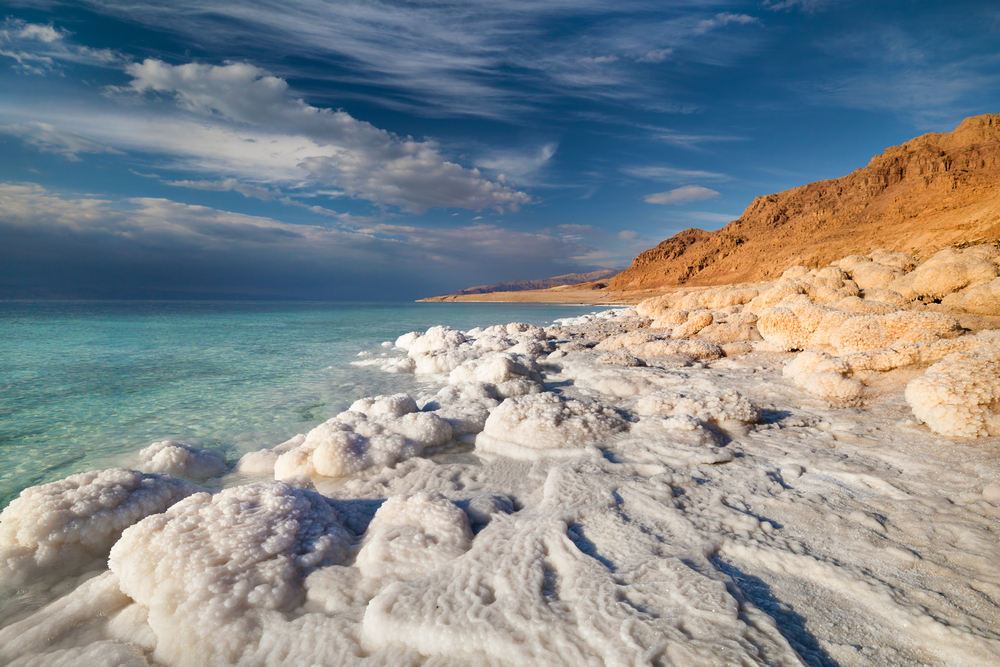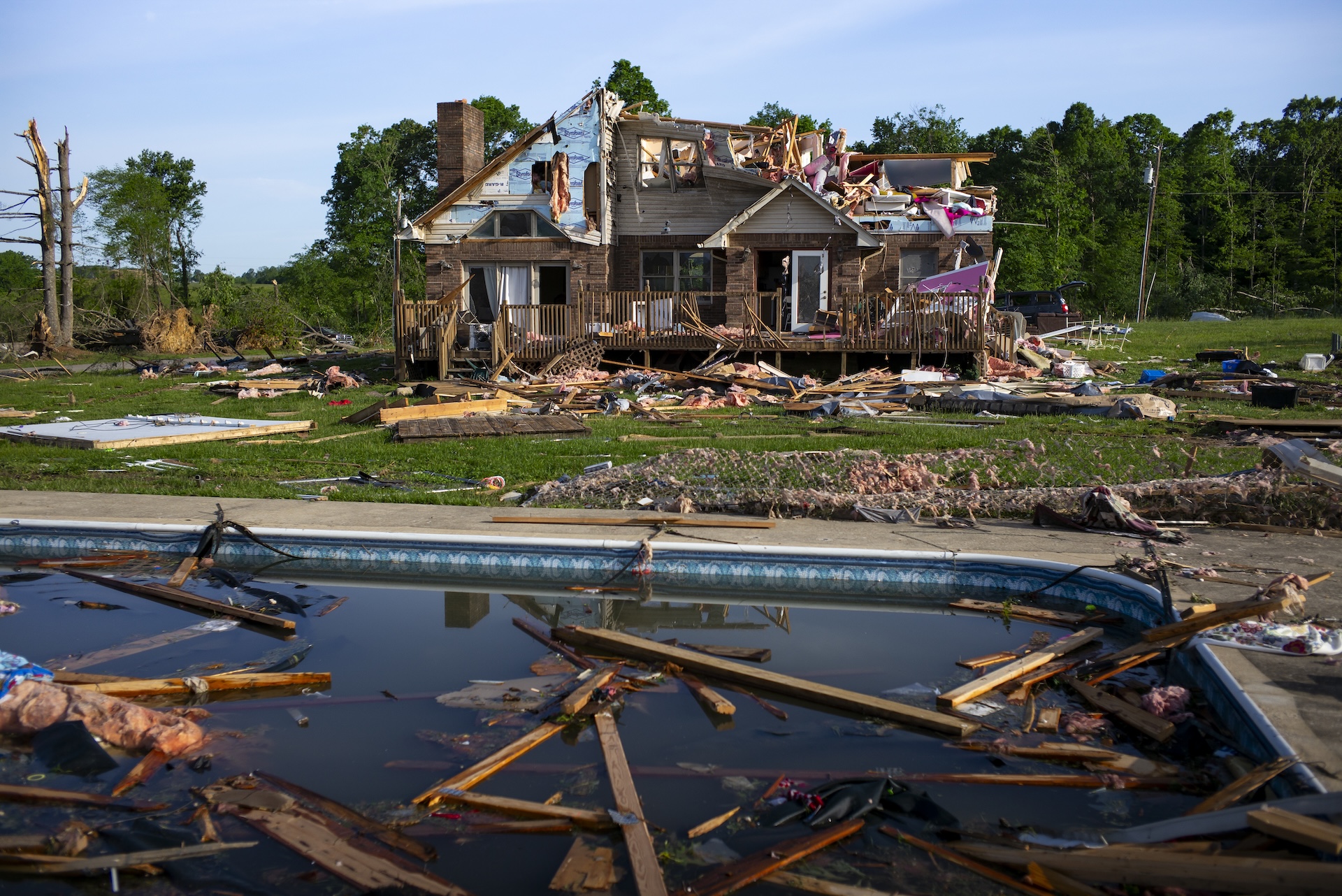Why Is the Dead Sea So Salty?

Bordered by Jordan to the east and by Israel and Palestine to the west, the Dead Sea is a landlocked lake rather than a true sea, and is recognized as one of the saltiest bodies of water on Earth.
Its name is well earned — no fish, birds or plants can survive in its high-saline environment. Along the shores, salt buildup collects in rocky ridges, peaks and towers, and visitors find that the Dead Sea's extra-salty water is so buoyant that they can practically sit on its surface.
Recently, an artist used the Dead Sea to transform an ordinary dress into a brittle, glittering, salty sculpture. After spending two months immersed in the "sea," the dress emerged thickly coated in brilliant white crystals, a gleaming testament to the quantity of salt in the water. [Crystal Bride Gown Transformed by Dead Sea Salt (Photos)]
But what is it that makes the Dead Sea so excessively salty — nearly 10 times saltier than normal seawater?
Salt of the Earth
Famed author Mark Twain visited the Dead Sea in 1867, describing the unusual experience in his travel book, "The Innocents Abroad, or The New Pilgrims' Progress" (American Publishing Company, 1869) as "a funny bath" that left him with "a splendid brand-new smell."
"Some of us bathed for more than an hour, and then came out coated with salt till we shone like icicles," Twain wrote.
Most ocean water is typically about 3.5 percent dissolved salts, according to the National Oceanographic and Atmospheric Administration (NOAA). This salt originates in rocks on land; acids in rainwater dissolve the rocks and create ions — charged atomic particles — that runoff carries into the ocean. The most common of these ions are sodium and chloride, which accumulate in the ocean as salt.
Get the world’s most fascinating discoveries delivered straight to your inbox.
If all of the salt in the ocean were removed and spread over all of the dry land on Earth, the layer would reach a height of 500 feet (150 meters), according to NOAA.
But all of that salt is still just a drop in the bucket compared to the quantities in the Dead Sea's waters.
How low can you go?
NOAA estimates that the water in the Dead Sea is five to nine times as briny as seawater. Salinity increases in the sea's deeper waters; at depths below 300 feet (100 m), the water becomes so concentrated with salt that it can hold no more, and the salt builds up on the seafloor.
The Dead Sea lies in a fault valley that covers more than 620 miles (1,000 km), beginning at the Sinai Peninsula's tip and extending northward to Turkey. Its elevation is the lowest on the planet — 1,407 feet (429 m) below sea level. A series of lakes once occupied this valley, but the last of them disappeared 15,000 years ago, leaving only the Dead Sea behind, according to the Minerva Dead Sea Research Center (MDSRC).
One source of freshwater feeds the Dead Sea: the Jordan River. But without any outlets, when freshwater reaches the sea, it has nowhere else to go. In the arid low-lying desert, the water that collects in the Dead Sea evaporates more quickly than water in the open ocean, leaving vast quantities of salt behind, the MDSRC explains.
Left for dead
In recent years, human activity has siphoned still more precious water from the Dead Sea by diverting the Jordan River for agricultural use, thus shrinking the sea's boundaries and making the remaining water even saltier.
In fact, the Dead Sea is disappearing at an alarming rate, receding by about 3 feet (1 m) each year, according to a study published in 2010 in the journal Environmental Economics. The study authors further noted that the Dead Sea has retreated by about 100 feet (30 m) since the start of the 20th century.
And research suggests that even without human intervention, the Dead Sea could be in trouble. In 2010 and 2011, scientists drilled below the Dead Sea to look for clues about its geologic past. They found that about 120,000 years ago, during a warm period that preceded the last ice age, the Dead Sea dried up completely, leaving all of its salt behind.
But though its future may be uncertain, the body of water long known for being a "dead zone" still has a few surprises to offer scientists. In a 2011 expedition, researchers donned specialized diving equipment and descended to previously unreachable depths in the salty water, finding freshwater springs that were surrounded by colonies of microbes.
It looks like the Dead Sea might still have some life in it after all.
Original article on Live Science.

Mindy Weisberger is a science journalist and author of "Rise of the Zombie Bugs: The Surprising Science of Parasitic Mind-Control" (Hopkins Press). She formerly edited for Scholastic and was a channel editor and senior writer for Live Science. She has reported on general science, covering climate change, paleontology, biology and space. Mindy studied film at Columbia University; prior to LS, she produced, wrote and directed media for the American Museum of Natural History in NYC. Her videos about dinosaurs, astrophysics, biodiversity and evolution appear in museums and science centers worldwide, earning awards such as the CINE Golden Eagle and the Communicator Award of Excellence. Her writing has also appeared in Scientific American, The Washington Post, How It Works Magazine and CNN.

